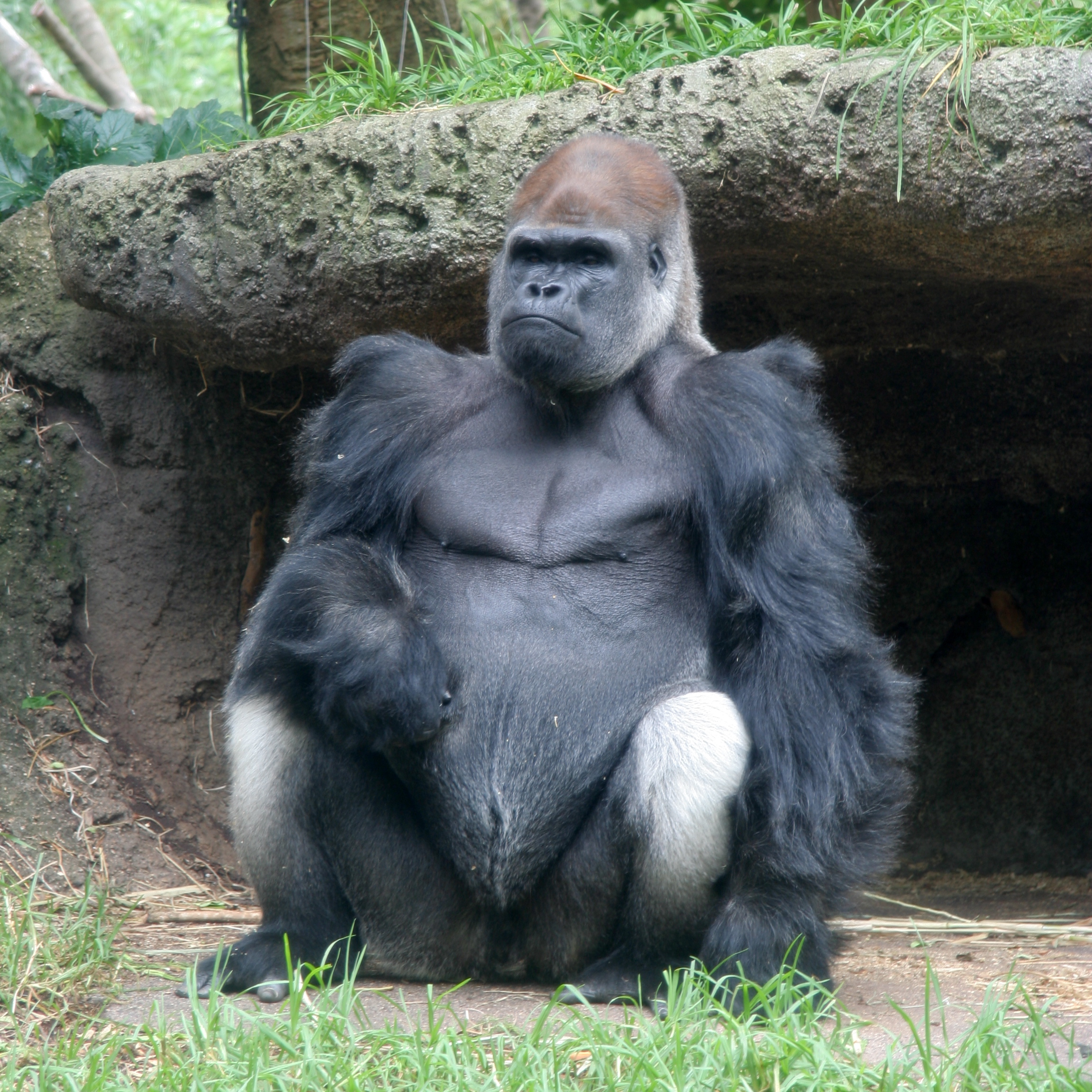With an average weight of 210 kg Eastern lowland gorilla is the biggest gorilla ever. The gorilla is the largest monkey in the world. The large, huge face and size make it very dangerous. An endemic to the hilly forests of the eastern Democratic Republic of the Congo, the eastern lowland gorilla, also known as Grauer’s gorilla, is a critically endangered subspecies of the eastern gorilla.
The biggest of the four gorilla subspecies is the eastern lowland gorilla, sometimes referred to as Grauer’s gorilla. It differs from other gorillas by having a short snout, huge hands, and a stocky build. The largest gorilla ever captured was a 1.83 m (6 ft 0 in) silverback that measured 267 kg (589 lb) and was photographed in Ambam, Cameroon. Males kept in captivity can weigh up to 310 kg (683 lb) and be overweight.
What is the Largest Living Primate?
The largest living primate is the eastern lowland gorilla, standing up to 6.6 feet and weighing 50 pounds in the wild. The record for the largest gorilla goes to Phil, raised in the St. Louis Zoo, weighing in at 606 pounds, though he was only 1.5 feet tall.
A silverback gorilla that was shot dead in Ambam, Cameroon, and weighed 267 kg (589 pounds) was the biggest gorilla ever documented. Male gorillas in captivity may weigh up to 310 kg, or 683 pounds. Gorillas are incredibly powerful, with silverbacks able to lift as much as 815 kg of weight.
The biggest of the great apes, gorillas are stocky creatures with broad shoulders, enormous, human-like hands, tiny eyes set into hairless faces, and broad chests and shoulders. The Congo Basin forest, which divides the two gorilla species by around 560 miles, is located in equatorial Africa.
Gorillas consume mostly fruits, bamboo shoots, and stems as part of their vegetarian diet. In addition to eating ants and termites, western lowland gorillas often destroy termite nests in order to consume the larvae. Gorillas eat primarily leaves, shoots, and stems, making up about 85% of their diet, but they may also consume larvae, snails, ants, roots, barks, and decaying wood, which is an excellent source of sodium and salt.
Given that they are both extremely aggressive species, a protracted battle might be devastating. Even so, the lion would certainly triumph because of its superior strength, which would make up for its relative lack of endurance. In a one-on-one battle, a lion has a high chance of defeating a gorilla. A lion rarely engages in alone combat, though.
How heavy is the gorilla?
Western Gorilla: 160 kg
Eastern Gorilla: 150 kg
How tall is the gorilla?
Western Gorilla: 1.6 – 1.7 m
At 225kg, Gohonda is the world’s largest silverback mountain gorilla. She is the alpha male of the Sabinio group and is often seen with several adult women in the group. Rwanda Vulcanos National Park (Park National des Vulcans) is home to some of the critically endangered mountain gorillas.
Adult male mountain gorillas are called silverbacks because they have silver saddles of hair on their backs. Mountain gorillas have a wide chest, long, muscular arms, and wide legs and hands. Their arms are longer than their legs. The Silverback Gorilla is the most endangered species among all gorilla species.
Silverbacks are the term used to describe mature male mountain gorillas. Silverback gorillas have some of the highest strength-to-weight ratios of any living creature.
Grizzlies are incredibly powerful, yet gorillas, chimpanzees, and monkeys have far stronger muscles than other creatures their size. The combination of their increased power and extended arms might level the playing field in a conflict between a grizzly and a silverback.
Adult wives are about 200 pounds and about 4 feet tall. Male gorillas are much larger than wives, weighing about 400 pounds and weighing 6 feet tall.
Other Recommended Reading
- What Animal Has the Closest DNA to Humans? 9 Examples
- Are Chimpanzees Apes? Similarities | Dissimilarities
- Are Chimpanzees Monkeys? Similarities | Dissimilarities
- Genetic Difference Between Humans and Chimps
- 18 Similarities Between Humans and Chimpanzees
- Genetic Similarity Between Humans and Chimpanzees
- Major Differences Between Humans and Chimpanzees
- White-Faced Saki Monkey – Description | Profile | Traits
- Are Humans Originated from Monkeys?
- Are Humans Originated from the Great Apes?
- Chimpanzees are Human’s Closest Relatives or Not
- White-Faced Saki – Profile | Description | Facts | Traits
- Black Bearded Saki – Profile | Description | Facts | Traits
- Goeldi’s Marmoset – Profile | Description | Facts | Lifestyle
- Red-handed Howler Monkey – Profile | Sound | Diet
- Robust Capuchin Monkey – Profile | Tool | Lifestyle | Diet
- Northern Muriqui – Profile | Lifestyle | Reproduction
- Mexican Black Howler Monkey – Profile | Facts | Habit
- Bare-eared Squirrel Monkey – Profile | Facts | Description
- Bolivian Red Howler Monkey – Profile | Facts | Habitat


